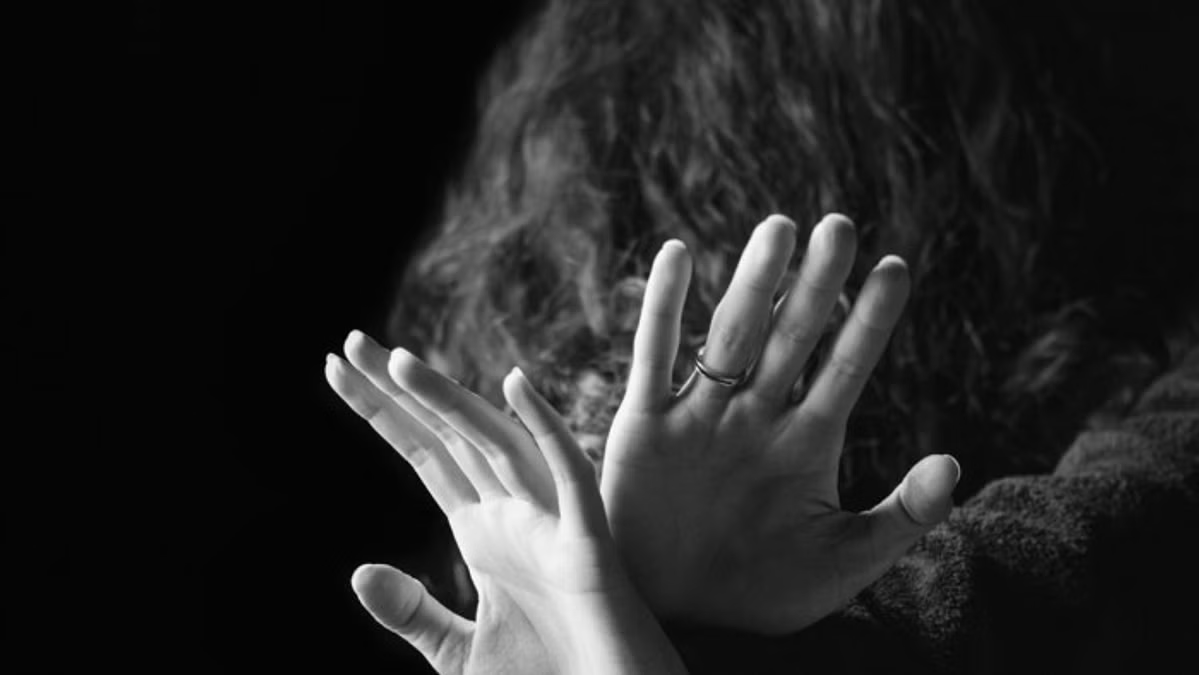- Courses
- GS Full Course 1 Year
- GS Full Course 2 Year
- GS Full Course 3 Year
- GS Full Course Till Selection
- Online Program
- GS Recorded Course
- NCERT (Recorded 500+ Hours)
- Polity Recorded Course
- Geography Recorded Course
- Economy Recorded Course
- AMAC Recorded Course
- Modern India, Post Independence & World History
- Environment Recoded Course
- Governance Recoded Course
- Science & Tech. Recoded Course
- International Relations and Internal Security Recorded Course
- Disaster Management Module Course
- Ethics Recoded Course
- Essay Recoded Course
- Current Affairs Recoded Course
- CSAT
- 5 LAYERED ARJUNA Mentorship
- Public Administration Optional
- ABOUT US
- OUR TOPPERS
- TEST SERIES
- FREE STUDY MATERIAL
- VIDEOS
- CONTACT US
The Lancet Study on Sexual Violence Against Children (SVAC) – May 2025
The Lancet Study on Sexual Violence Against Children (SVAC) – May 2025
08-05-2025

- In May 2025, A comprehensive global study by The Lancet, led by the Institute for Health Metrics and Evaluation (IHME) at the University of Washington School of Medicine, has examined the prevalence of sexual violence against children and adolescents across 204 countries from 1990 to 2023.
- It is a part of the Global Burden of Disease Study, focusing on first exposure by age and sex.
What is Sexual Violence Against Children (SVAC)?
- Sexual Violence Against Children (SVAC) refers to any sexual act, attempt to obtain a sexual act, or other act directed against a child’s sexuality using coercion, threats, deception, or force — regardless of the relationship to the child.
- It includes abuse that occurs both in-person and online, and can be committed by adults or peers.
- According to global legal standards, a child is anyone under 18 years of age (as per the UN Convention on the Rights of the Child).
Key Findings of the Study:
- Age of First Sexual Abuse:
- Age at First Abuse (Among 13–24-year-old survivors):
- Before 18: 67% (females), 72% (males)
- Before 16: 42% (females), 48% (males)
- Before 12: 8% (females), 14% (males)
- Nearly 50% of sexual abuse cases begin at age 15 or younger.
- Age at First Abuse (Among 13–24-year-old survivors):
Global Prevalence (Before Age 18):
- 18.9% of women (≈1 in 5)
- 14.8% of men (≈1 in 7)
- No significant change since 1990, indicating systemic failure.
Countries with Highest Female SVAC Prevalence:
|
Country |
Prevalence |
|
Solomon Islands |
~43% |
|
Côte d’Ivoire |
~32% |
|
Chile |
~31% |
|
Costa Rica |
~31% |
|
India |
~31% |
|
New Zealand |
~29% |
|
USA |
~28% |
|
UK |
~24% |
Countries with Highest Male SVAC Prevalence:
|
Country |
Prevalence |
|
Côte d’Ivoire |
~28% |
|
Bangladesh |
~28% |
|
Botswana |
~27% |
|
Haiti |
~26% |
|
Nigeria |
~24% |
|
USA |
~16% |
|
UK |
~17% |
Highest SVAC Prevalence by Region:
- Women: South Asia – ~27%
- Men: Sub-Saharan Africa – ~19%
Country-specific Data (Before Age 18):
- India has one of the highest prevalence rates globally for women.
|
Country |
Women (%) |
Men (%) |
|
India |
31% |
13.5% |
|
USA |
28% |
16% |
|
UK |
24% |
17% |
Underreporting and Societal Challenges:
- The study acknowledges high underreporting, especially in rural areas, due to:
- Stigma
- Fear of social ostracism
- Weak institutional support
- Lack of awareness of legal rights
Social Initiative Highlighted:
- Case of Sanjana (Name Changed):
- A 15-year-old girl from Sangli, Maharashtra.
- Abused by her maternal uncle after her mother’s death.
- Her case became the symbol of a grassroots campaign.
- Campaign: “Zabardasti Mein Kaisi Mardangi”
- Translation: “What kind of masculinity is this if it’s forced?”
- Launched by Sampada Grameen Mahila Sanstha (SANGRAM), a women-centered NGO.
- Led by Meena Saraswathi Seshu, General Secretary of SANGRAM.
- Focuses on:
- Toxic masculinity
- Gendered violence in rural India
- Community accountability
- Youth sensitization in villages of Maharashtra
Legal & Policy Framework in India: Laws to Address Child Sexual Abuse:
- POCSO Act, 2012 (Protection of Children from Sexual Offences)
- Defines a child as <18 years.
- Child-friendly procedures for reporting and trial.
- Stringent punishments including life imprisonment.
- Indian Penal Code (IPC), Section 375-376 Defines rape and punishment.
- Juvenile Justice (Care and Protection of Children) Act, 2015 Covers neglected or abused children.
- Criminal Law (Amendment) Act, 2013 Includes broader definitions of sexual assault.
Institutions & Schemes:
- Childline 1098 – Emergency outreach for children in distress.
- Integrated Child Protection Scheme (ICPS)
- National Commission for Protection of Child Rights (NCPCR)
Ethical & Social Implications:
- Moral Failure of society in protecting its most vulnerable.
- Promotes patriarchal silence over justice.
- Reinforces toxic masculinity and gender imbalance.
- Calls for a paradigm shift in sex education, family awareness, and school sensitization.
Health and Social Consequences:
Survivors are at increased risk of long-term physical, psychological, and social harm, including:
- Mental Health: Depression, anxiety, PTSD
- Addictions: Alcohol, drug abuse
- Diseases: Sexually transmitted infections (STIs), asthma
- Education & Employment: Lower academic achievement, reduced income potential
- Social Development: Stigmatization, isolation, vulnerability to further abuse
Policy & Legal Implications:
- Global Inaction: Minimal change in SVAC rates since 1990 shows global governance failure.
- Policy Gaps:
- Weak enforcement of child protection laws
- Inadequate support and rehabilitation systems
- Lack of child-friendly legal and reporting procedures
- Data Gaps:
- Inconsistent methodologies across countries
- Barriers to reporting due to stigma and fear
Alignment with UN SDGs:
- SDG Target 16.2: "End abuse, exploitation, trafficking, and all forms of violence against and torture of children."
- SVAC rates far exceed SDG targets and violate:
- CRC (Convention on the Rights of the Child)
- UNICEF guidelines
- International Classification of Violence Against Children framework
Recommendations from the Study:
- Comprehensive National Frameworks for prevention, response, and rehabilitation.
- Standardized Data Systems to ensure comparability and evidence-based policymaking.
- Education & Awareness:
- Child rights in school curricula
- Sensitization of parents, teachers, police, and judiciary
- Child-Friendly Legal Processes:
- Fast-track courts for POCSO-type cases
- Victim compensation and witness protection
- Cross-sectoral Coordination: Involving health, education, police, and community organizations.
Crimes Against Women and Children Given Precedence Under Bharatiya Nyaya Sanhita (BNS), 2023
Key Features and Legal Reforms in BNS, 2023:Structural and Legal Innovations
Strengthened Punishments:Gang Rape
Sexual Intercourse Under False Pretenses
Human Trafficking and Child Exploitation:Section 143 – Human Trafficking
Section 144(1) – Sexual Exploitation of Trafficked Children
Protective Procedural Provisions for Women and Children:Statement Recording & Investigation
Summons and Police Attendance
Medical Treatment
Significance and Implications:Progressive Aspects
Concerns & Challenges
International Alignment & SDGs
|
|
Also Read |
|
UPSC Foundation Course |
|
| UPSC Monthly Magazine | CSAT Foundation Course |




